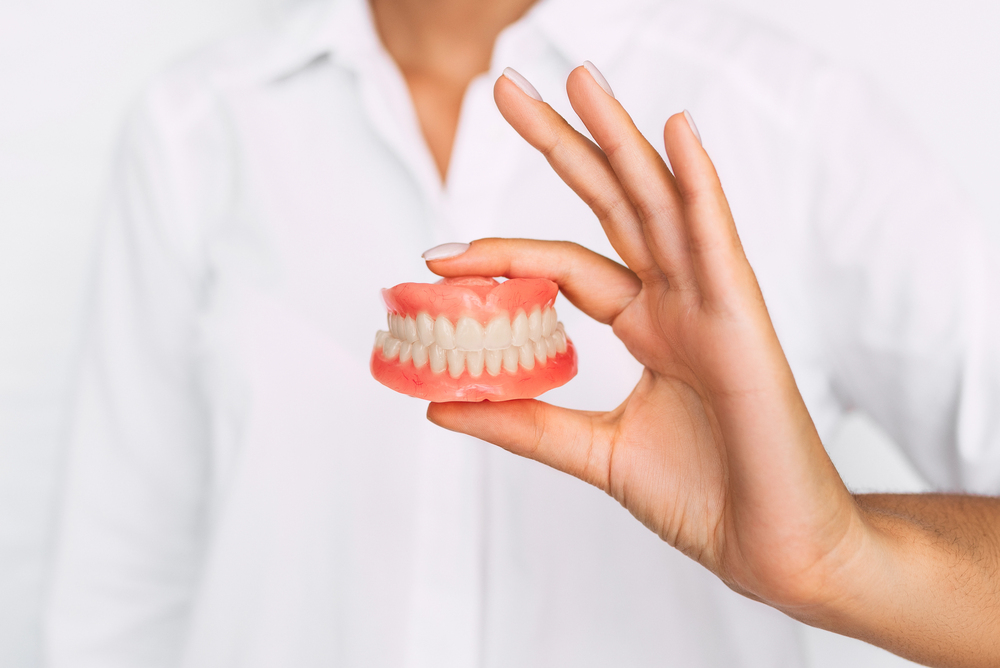In modern dentistry, dental implant attachments play a critical role in ensuring the stability and functionality of implant-supported restorations. As researchers and designers of the Denture Retention Attachment (D.R.A.), we strive to provide clinicians and patients with the most effective and comfortable solutions for tooth replacement.
Implant-supported prostheses have transformed restorative dentistry, but their long-term success depends on the quality and precision of the dental implant attachments you choose. When you work with Implant Attachments, you’re choosing quality, precision, Locator®-system compatibility, and superior comfort for your patients. Call us at (940) 784-3559 to learn more about our FDA-approved dental implant attachments and devices.
Dental implant attachments serve as the crucial link between implants and prosthetic components, enhancing retention, stability, and overall patient satisfaction. Understanding the different types of attachments, their clinical indications, and their benefits allows you to make informed decisions that improve patient outcomes.
Understanding Dental Implant Attachments
If you’re new to the world of dental implant attachments, here’s a quick rundown of the essential information:
What Are Dental Implant Attachments?
Dental implant attachments are small yet essential components that connect implant fixtures to prosthetic restorations. They ensure the retention and stability of overdentures, fixed hybrid prostheses, and other implant-supported restorations. The choice of attachment system affects prosthesis longevity, function, and patient comfort.
The Importance of Precision in Attachment Selection
Selecting the appropriate dental implant attachment is crucial for optimizing treatment success. Different clinical scenarios require different attachment systems, and choosing the right one can prevent complications such as prosthesis instability, peri-implantitis, and patient dissatisfaction.
Factors such as implant angulation, bone density, and occlusal forces all play a role in determining the most suitable attachment.
Types of Dental Implant Attachments
There are various types of dental implant attachments, including:
Ball Attachments
Ball attachments are among the most commonly used dental implant attachments for overdentures. They consist of a ball-shaped head that fits into a corresponding socket in the prosthesis.
These attachments provide good retention while allowing some rotational movement, which can be beneficial in cases with non-parallel implants.
Locator Attachments
Locator attachments offer a low-profile design and excellent retention. Their self-aligning feature simplifies insertion and removal for patients, making them a preferred choice for overdenture cases.
The retentive strength of locator attachments can be adjusted using different retentive inserts, allowing for customization based on patient needs.
Bar Attachments
Bar attachments involve a bar that connects multiple implants, onto which the prosthesis attaches. These provide increased stability and load distribution, making them ideal for patients with high occlusal forces.
Bar attachments are often used in cases requiring enhanced support and even stress distribution across implants.
Magnetic Attachments
Magnetic attachments utilize magnetic forces to retain overdentures. These systems are particularly useful for patients with limited dexterity who struggle with conventional attachment mechanisms. While they offer ease of use, their retention strength may decrease over time due to demagnetization.
Stud Attachments
Stud attachments provide a secure and retentive connection between implants and prostheses. Their precision-machined components ensure a snug fit, reducing micro-movements that can lead to prosthesis wear and implant overload.
Clinical Considerations for Dental Implant Attachments
Of course, implant attachments aren’t exactly one-size-fits-all. So, here are some important factors to consider when choosing the right dental implant devices for your patients:
Patient-Specific Factors
When selecting dental implant attachments, patient-specific factors must be carefully evaluated. These include:
- Bone quality
- Implant angulation
- Oral hygiene ability
- Patient dexterity
Patients with limited manual dexterity may benefit from simplified attachment systems such as locator or magnetic attachments.
Occlusal Considerations
The type of attachment system chosen should align with the patient’s occlusal scheme. Patients with parafunctional habits, such as bruxism, require attachments that can withstand high occlusal loads. Bar attachments, for instance, distribute forces more evenly, reducing stress on individual implants.
Prosthesis Design
The design of the prosthesis influences the choice of implant attachments. Some cases may require removable prostheses with resilient attachments to accommodate functional movements, while others may necessitate rigid connections for maximum stability.
The Role of Dental Implant Attachments in Long-Term Success
Dental implants and dental implant attachments offer unparalleled benefits, particularly when it comes to preserving or increasing bone density around the implant area. This bone preservation lends itself well to long-term dental implant success. Here’s how implant attachments do it:
Enhancing Prosthetic Retention
One of the primary benefits of dental implant attachments is their ability to enhance prosthetic retention. Properly selected and maintained attachments ensure that implant-supported prostheses remain secure, reducing the risk of movement or dislodgement during function.
Improving Patient Comfort and Functionality
Stable dental implant attachments improve patient comfort by preventing excessive movement of the prosthesis. Patients can chew and speak with confidence, knowing their prosthetic teeth are securely in place. Additionally, attachments that allow for slight movement can enhance patient adaptation to their prostheses.
Reducing Implant Complications
Well-chosen attachments can minimize complications such as peri-implant bone loss, prosthesis fractures, and undue stress on implants. Ensuring passive fit and proper occlusal load distribution through appropriate attachment selection helps preserve the longevity of implant-supported restorations.
Maintaining and Replacing Dental Implant Attachments
While implants themselves can endure for decades, attachment devices may not have a similar lifespan. Here’s how to help your patients get the most out of implant attachments:
Routine Maintenance
Regular follow-ups and maintenance are crucial for the long-term success of implant-supported prostheses. Educate patients on cleaning their attachments to prevent plaque accumulation and peri-implant diseases.
Clinicians must routinely assess attachment wear and replace worn-out components as needed.
Recognizing Signs of Wear and Failure
Over time, implant attachments may experience wear due to repeated insertion and removal. Signs of attachment failure include:
- Decreased retention
- Increased prosthetic movement
- Patient complaints of instability
Prompt replacement of worn components can prevent further complications.
Advancements in Implant Attachment Technology
At Implant Attachments, we understand how important it is to implement advanced technology into the fabrication process. That’s why we are committed to incorporating FDA-approved trends and materials into our products.
Digital Dentistry and Precision Attachments
Recent advancements in digital dentistry have improved the precision and customization of our D.R.A. dental implant attachments. CAD/CAM technology allows for the fabrication of highly precise attachment components, enhancing fit and function.
Materials Innovation
New materials, such as high-performance polymers and medical-grade titanium alloys, are being used to improve the durability and biocompatibility of our dental implant attachments. These advancements contribute to longer-lasting prosthetic solutions with reduced wear and tear.
Explore FDA-approved Dental Implant Attachments Today
Implant attachments are fundamental components in modern prosthodontics, directly impacting the success of implant-supported restorations.
As a clinician, it’s up to you to select and maintain appropriate attachments to guarantee improved prosthetic function, patient comfort, and long-term implant stability. So, if you want the best outcomes for your patients, then you need innovative implant products from Implant Attachments.
Ready to explore the best in implant attachments? Click here to shop our FDA-approved and Locator-system-compatible devices. Use coupon code WELCOME to get two D.R.A. abutments and two processing sets for just $216.





